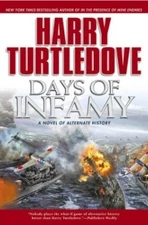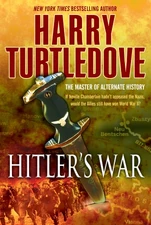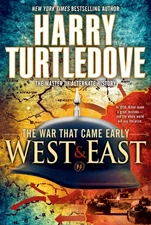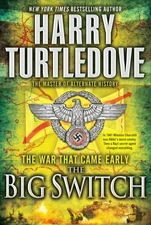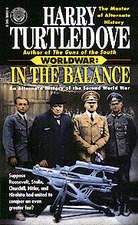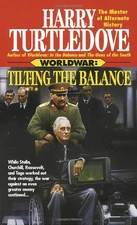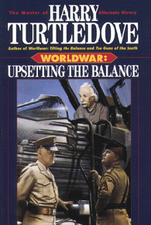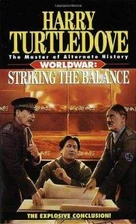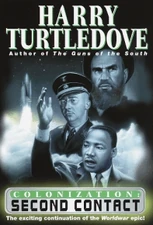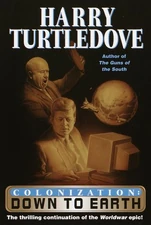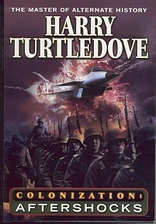| State of Manchuria (Manchukuo) (1932–1934) Empire of (Great) Manchuria (1934–1945) | |
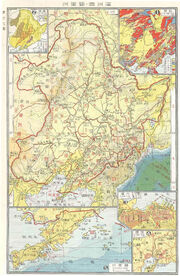
| |

| |
| Country | |
| Continent: | Asia |
| Capital: | Hsinking (Changchun) (until 9 August 1945) Tonghua (from 9 August 1945) |
| National Language: | Japanese Manchu Mandarin Mongolian |
| Status in OTL: | Inactive |
Manchukuo was a collaborationist government set up by Japan in Manchuria and part of Inner Mongolia prior to World War II. It was established by Japan in 1932 with aid from the Qing Dynasty, which had been ousted from China two decades before. Henry Puyi, the so-called "Last Emperor" of China, was the nominal ruler of Manchukuo, but ultimately real power resided in Japanese hands. Manchukuo ceased to exist in 1945 with Japan's defeat.
Manchukuo in Days of Infamy
Manchukuo served as a model for Japanese governance of Hawaii from 1942 to 1943, with Japan anointing a nominal monarch to legitimize its rule.[1] Representatives from Manchukuo were present during a crowning ceremony of King Stanley Owana Laanui in 1942.[2]
Manchukuo in In the Presence of Mine Enemies
Manchukuo was a puppet empire established by Japan in the early stages of its conquest of China. By 2010, it had been in existence for more than 70 years. The Emperors of Manchukuo and Japan were among the international heads of state who expressed their condolences upon the death of Germany's Führer Kurt Haldweim.[3] In 2011, neither emperor commented on the SS Putsch.[4]
Manchukuo in Joe Steele
As part of the Basra Conference agreement, the Soviet Union abrogated the Japanese-Soviet Neutrality Treaty by invading Manchukuo in 1945. They succeed in taking it from the Japanese and nominally returned it to China.[5] In fact, the Soviets handed control (along with seized weapons) to Communist Chinese leader Mao Tse-Tung rather than the American backed Chiang Kai-Shek.[6]
Manchukuo in "The Last Article"
By 1947, the Japanese-dominated government of Manchukuo negotiated a trade deal with Japanese-dominated China and Japanese-dominated Siberia.[7]
Manchukuo in The War That Came Early
Although pretending to be an independent empire ruled by the last Qing Emperor Puyi, Manchukuo was in practice a major colony of the Japanese Empire and actually administrated by the Kwantung Army. The country had been the site of a few minor skirmishes between that Army and the Soviets along the Mongolian border, and was later used as a launching pad for the Army's attack against Siberia on 1 April 1939. Nevertheless, the civil government of Manchukuo still considered itself "neutral" in the war and protested when the Soviets bombed Tsitsihar and Harbin in retaliation.[8]
Manchukuo in Worldwar
Manchukuo was a Japanese puppet state and a major economic resource for the Japanese Empire during the 1930s and '40s. There had been numerous border clashes between Japanese and Soviet Forces during the late 1930s, but during World War II, the front was quiet.
When the Race invaded in June 1942, they defeated the Japanese Army in China and drove them back into Manchukuo. Although they managed to slow down the Race's advance by destroying the roads and forcing the landcruisers into the rain soaked mud, it was of little use. As the winter season began, the Race finally captured Harbin which broke the lines of the Japanese Army and scattered them, allowing the Race to conquer the country. At the Peace of Cairo in 1944, Manchukuo was recognized as Race Territory.[9]
When Japan acquired nuclear weapons in 1965 and demanded diplomatic privileges, they also insisted on the return of large stretches of their former empire in Asia. While the Race did grant Japan diplomacy, they refused to relinquish Manchukuo.
References
- ↑ Days of Infamy, pg. 264, HC.
- ↑ Ibid., pg. 437.
- ↑ In the Presence of Mine Enemies, pg. 72, HC.
- ↑ See, e.g., ibid. pg. 422.
- ↑ Joe Steele, pg. 314, HC.
- ↑ Ibid, pg. 325.
- ↑ See, e.g., The Best Military Science Fiction of the Twentieth Century, pg. 252.
- ↑ The Big Switch, pg. 88.
- ↑ See the Colonization map.
| |||||||||||||||||
| ||||||||||||||||
| |||||||||||||||||||
| ||||||||||||||
| ||||||||||||||||||||||
| |||||||||||||||||||||||||
